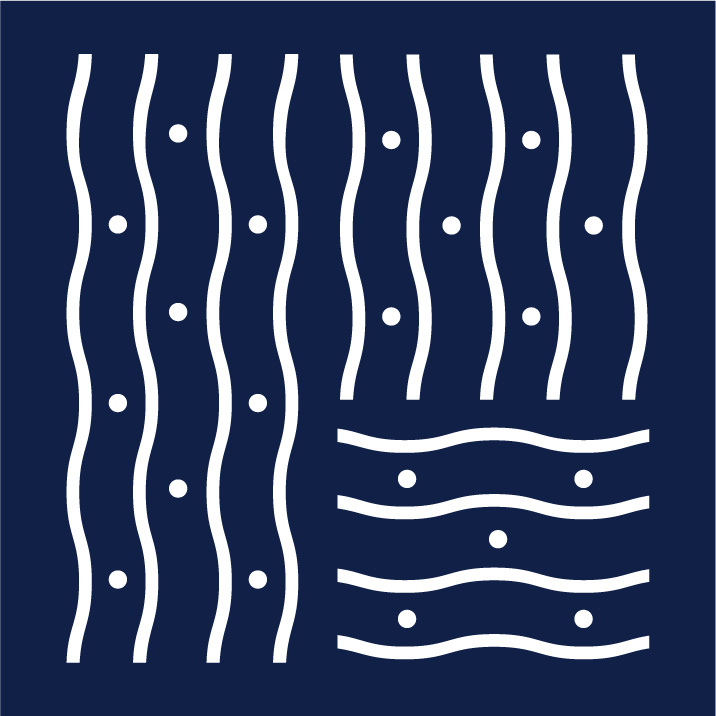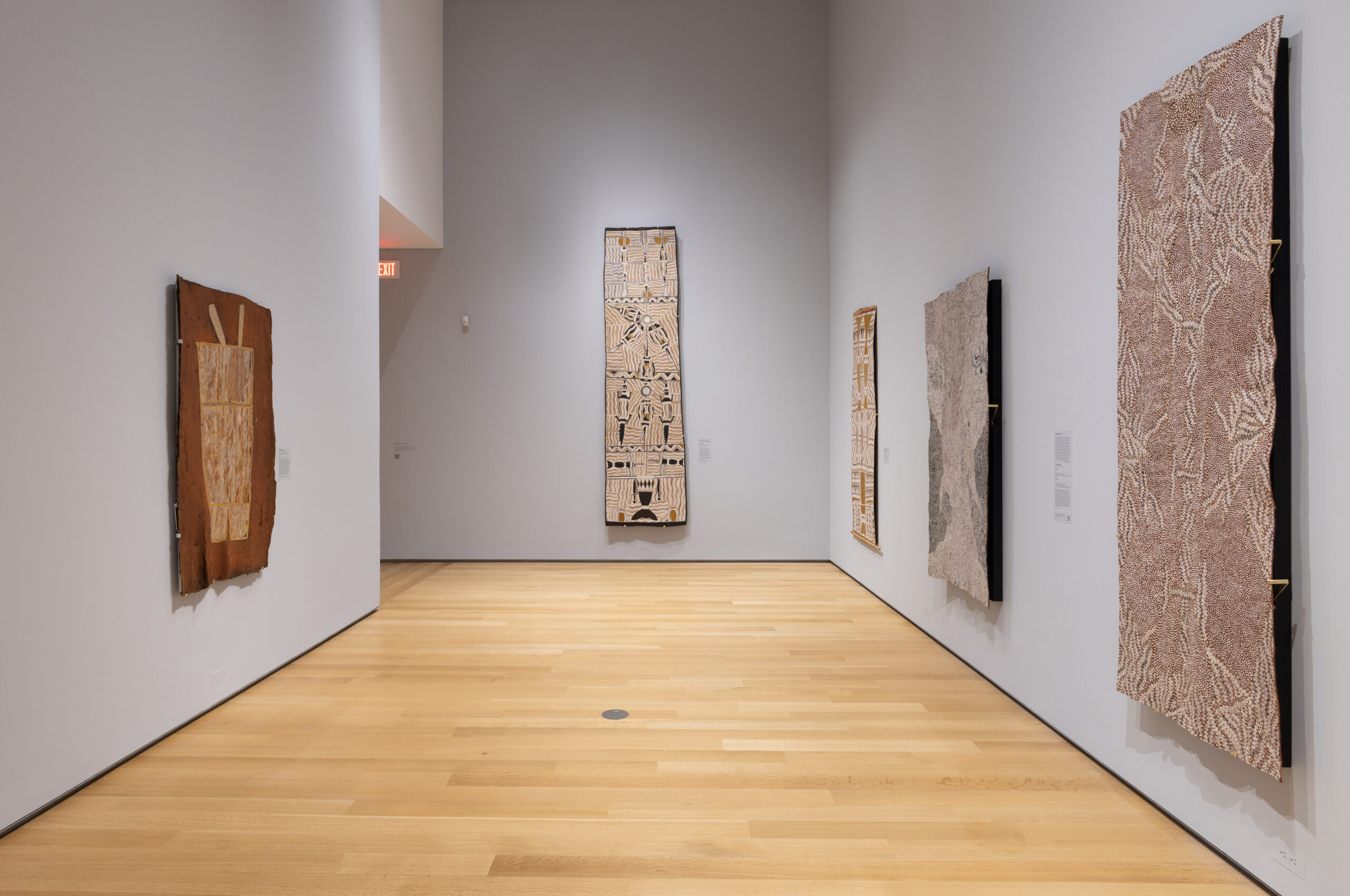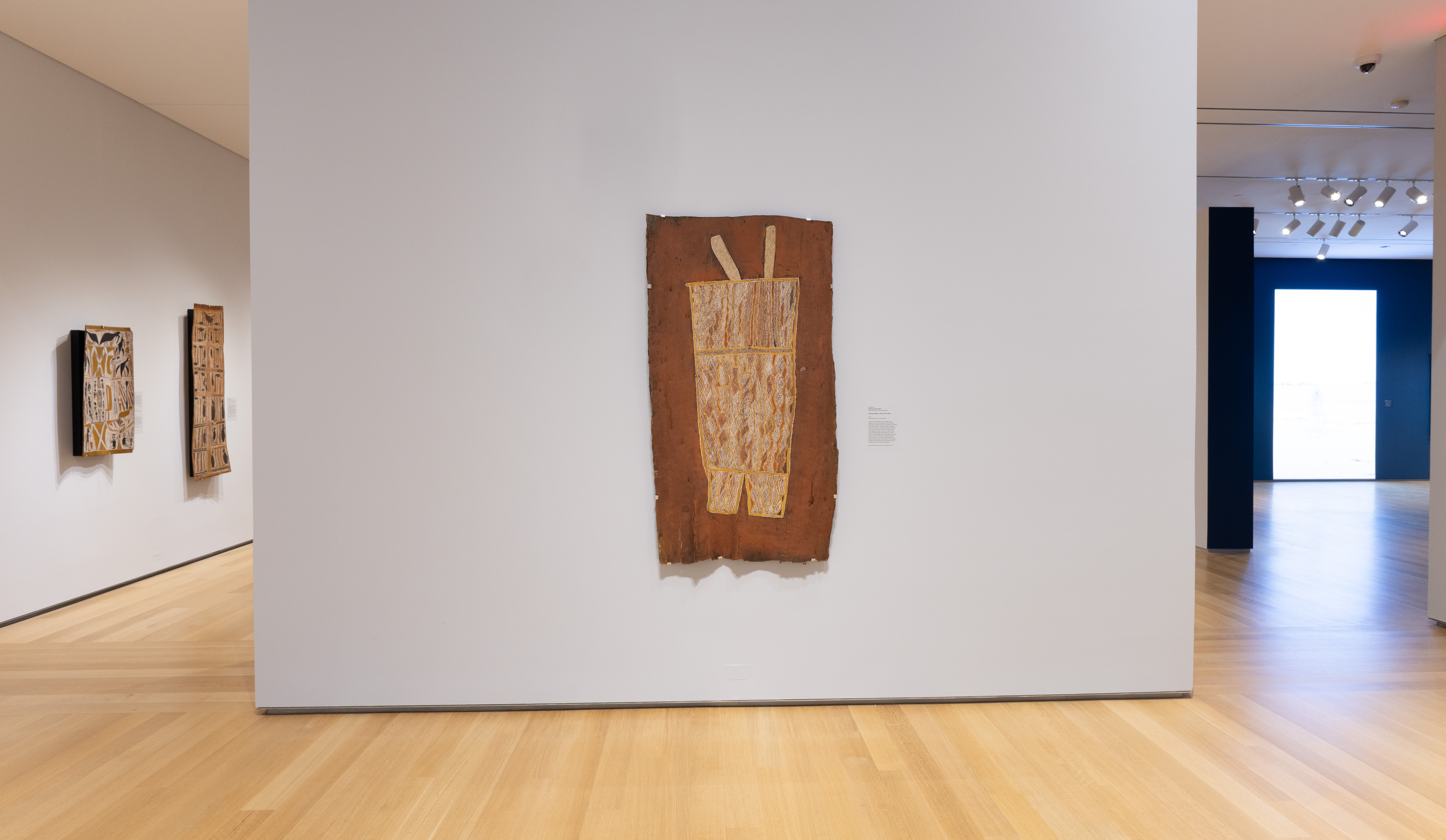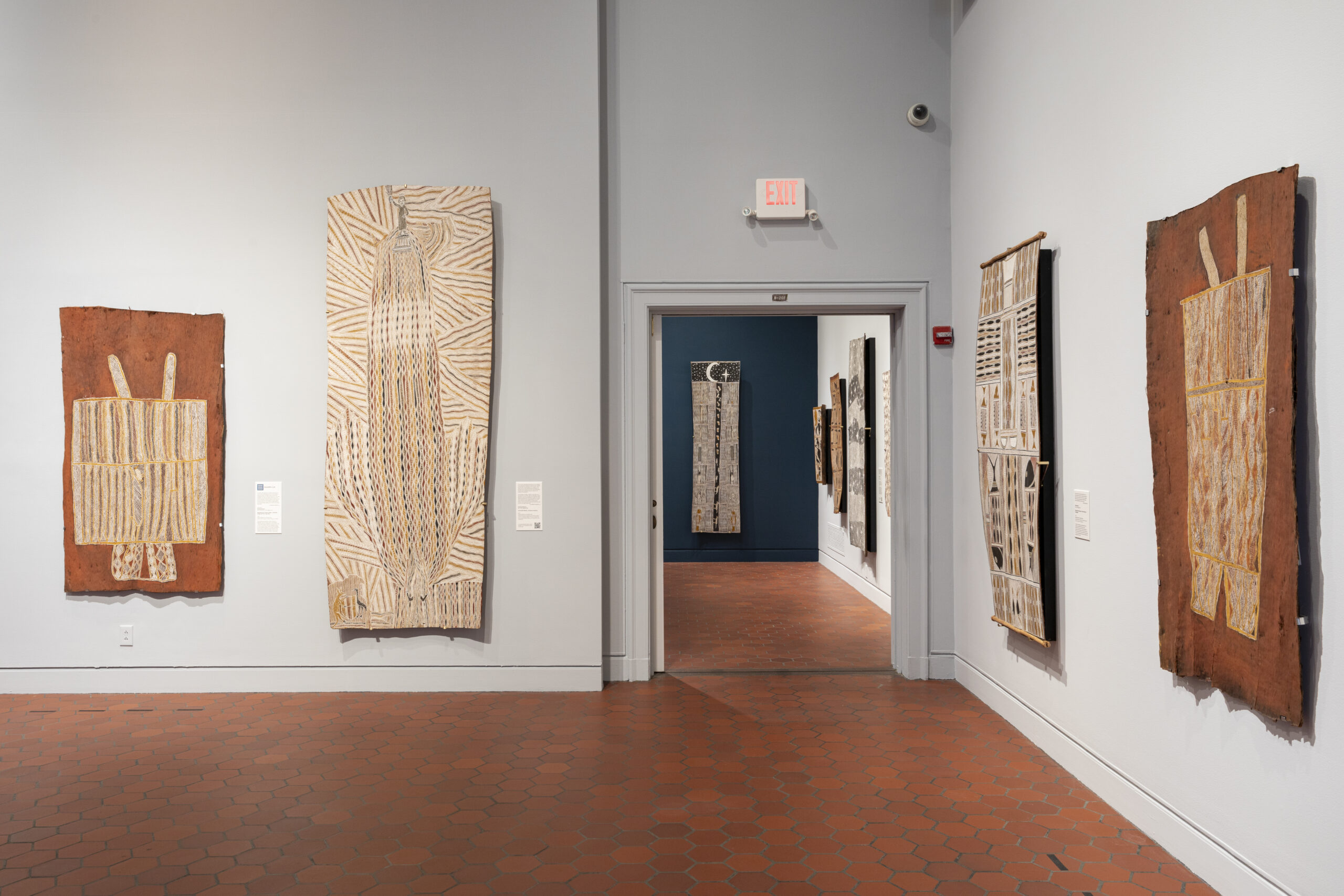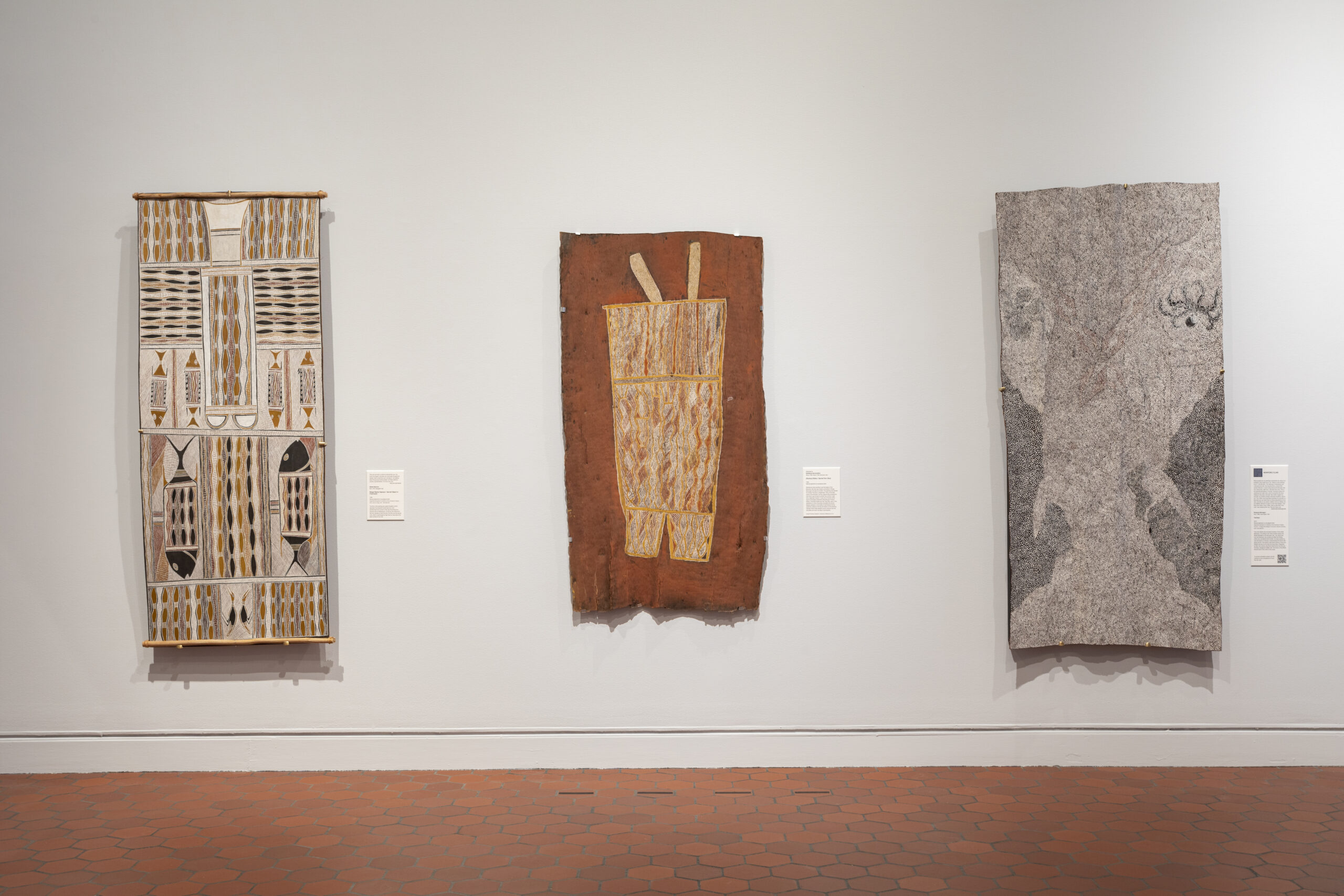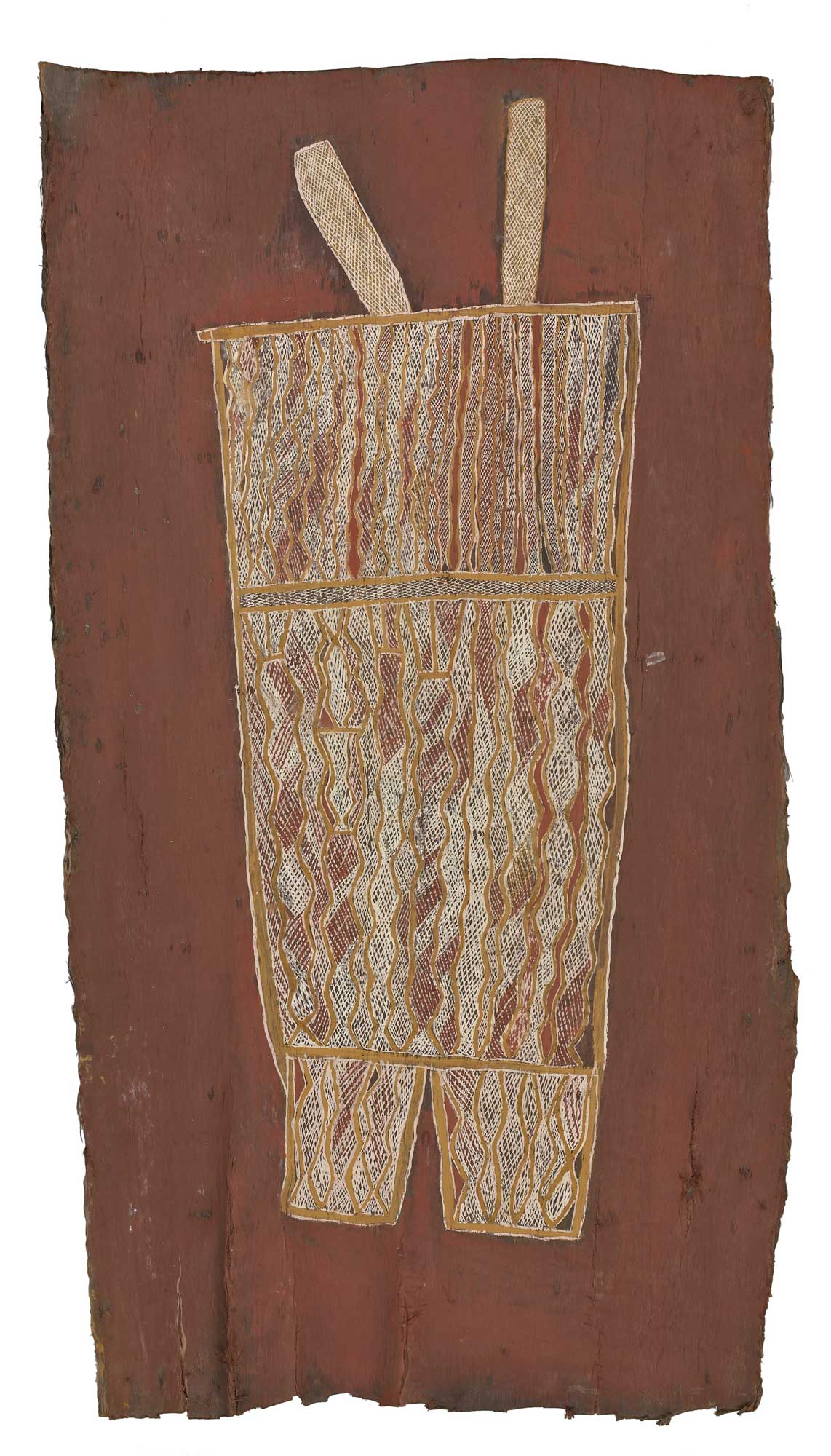
More Info
Djimbaryun Ŋurruwutthun was the leader of the Munyuku clan and was closely connected to Woŋgu Munuŋgurr through his mother. This painting was painted for Donald Thomson in September 1942, at the base camp of the Northern Territory Special Reconnaissance Unit. It was one of several works, such as Munḏukul Marawili’s Mundukuḻ ga Yirwarra Dhäwu | Ancestral Snake and Fish Trap Story, in which the artists recreated the sacred designs painted on the body during ceremony. Bands at the top and bottom of the painting indicate where these designs would continue over the shoulders and down the legs of participants.
– Kluge-Ruhe Aboriginal Art Collection
Additional Information
Decade
1942
Medium
Natural pigments on eucalyptus bark
Dimensions (IN)
65 ¾ x 35
Dimensions (CM)
167 x 88.9
Credit
Donald Thomson Collection. University of Melbourne, DT000061.
Narrative
Munyuku
The Munyuku clan belongs to the Yirritja moiety. Major spiritual themes relate to marine life...
Location
1940s
The onset of World War II spurs the formation of the Northern Territory Special Reconnaissance...
About The Artist(s)
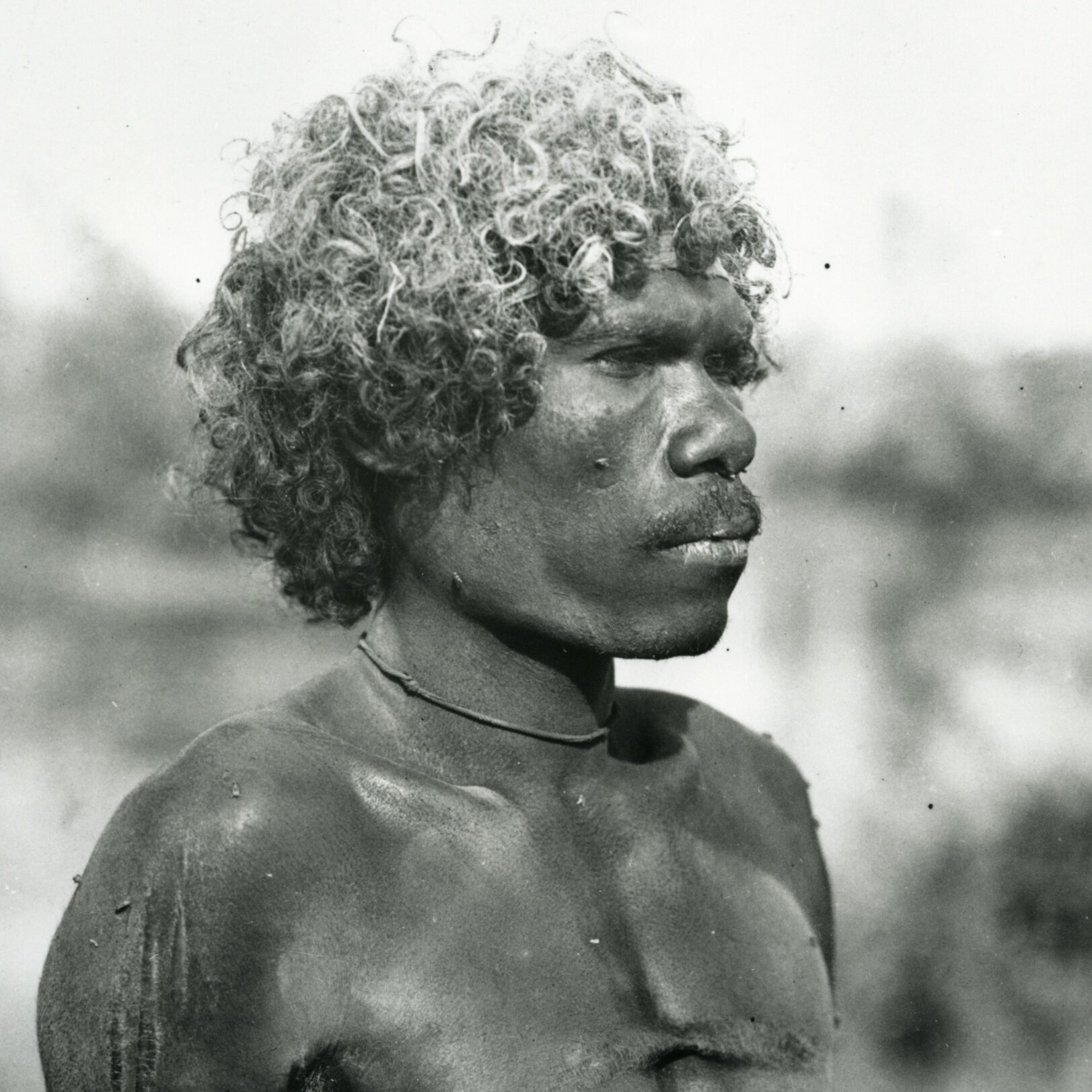
Clan
Munyuku
Artist Dates
c.1900-c.1960
Alternative Names
Djambaryan, Djimbarion, Djimbarjun, Jimnbaryun
Djimbaryun Ŋurruwutthun
The father of Ḏula Ŋurruwutthun and Gambali Ŋurruwutthun, Djimbaryun Ŋurruwutthun was a close associate of Woŋgu Munuŋgurr. As the leader of Woŋgu’s mother’s Munyuku clan, he served as of djuŋgayi (ceremonial manager). In 1942, he painted for Donald Thomson at the base camp of the Northern Territory Special Reconnaissance Unit, and in 1947, he produced crayon drawings for the anthropologists Ronald and Catherine Berndt.
Collections Represented
Berndt Museum of Anthropology, University of Western Australia
Donald Thomson Collection, University of Melbourne
Smithsonian National Museum of Natural History
